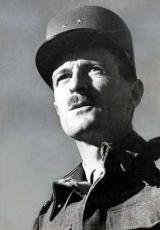Normandy - Falaise Pocket
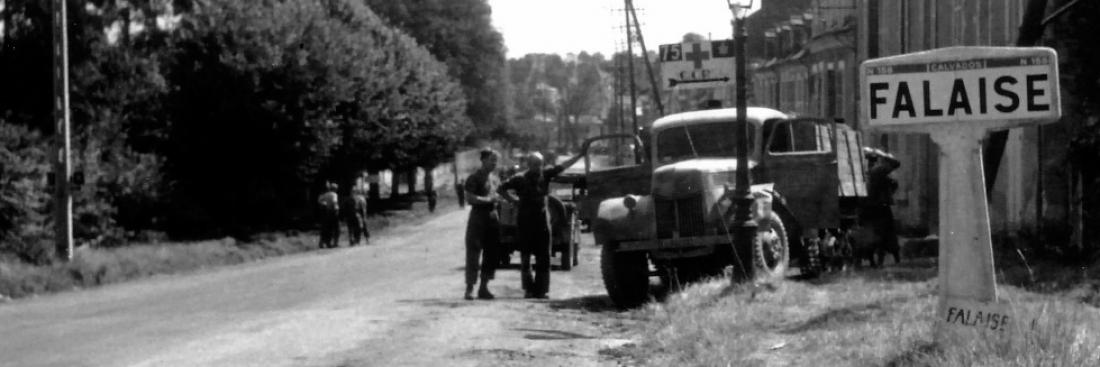
Nearly surrounded and under pressure from all sides, two German armies organised their retreat during the Battle of the Falaise Pocket.
The fighting

Central square of Falaise on 16 August 1944. Source: Basse-Normandie Regional Council / National Archives of Canada
On 16 August 1944, Falaise fell to the Canadians. The same day, the Americans reached Dreux. General von Klüge received authorisation from Hitler to pull back. Until 17 August, the retreat to the east went smoothly through the opening; but order turned into a rout that day.

Polish tank crew of the 1st Armoured Division in the chaos of the German retreat. Source: Polish Government Ministry of Information Photo Service
To the North, the 1st Canadian Army took Trun on 18 August, while to the south, the 5th Corps reached Chambois. During the morning of 19 August, the 4th Canadian Armoured Division entered Saint-Lambert-sur-Dives.
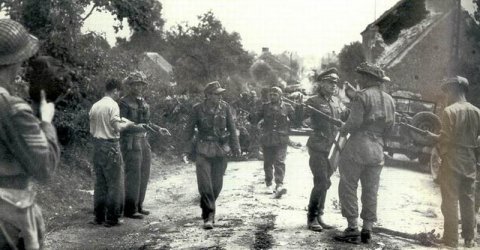
German troops surrendering at Saint Lambert les Dives. Source: Personal collection. trun.free.fr
The pocket shrank every day under the American, Canadian, British and French divisions' attacks and the incessant aerial bombings. The Germans resisted. The pocket became a furnace, a veritable ”cauldron” that the last German units tried to extricate themselves from on 19 and 20 August.
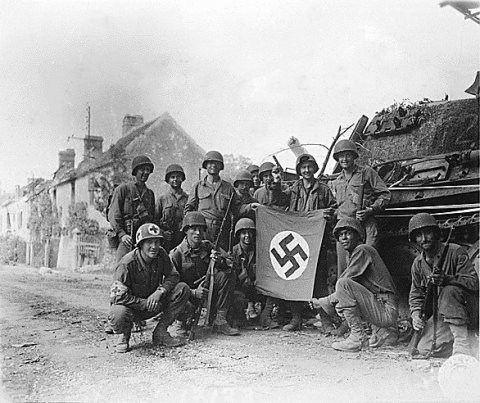
Group of American infantrymen in front of a German tank destroyed at Chambois, 20 August 1944. Source: US Archiv ARCWEB
On 19 August, the corridor was closed when the Canadians and Poles from Falaise and the Americans and French from the south and Alençon met up. On the 20th, some isolated units managed to escape during a counterattack carried out from the outside by parts of the 2nd and 9th SS Armoured Divisions. But the Chambois pocket was closed and the Battle of Normandy ended with an Allied victory.
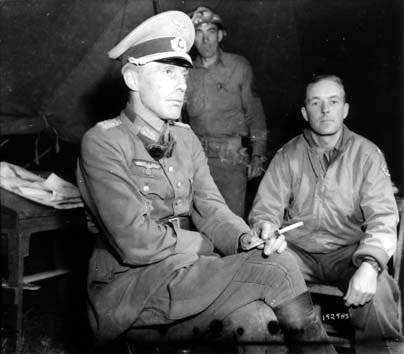
General Otto Elfeldt, commander of the German 84th Army Corps, was the only prisoner of his rank captured by the Allies in the pocket. Source: USA Historical Service - NARA
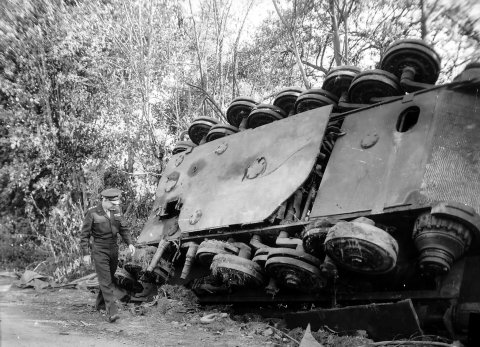
Eisenhower at Chambois, August 1944. Source: U.S. Federal Government
The French civilian victims of the Battle of Normandy

SNCF storage area-workshop destroyed on 9 June 1944... but also a great deal of ”collateral damage” for the people of Rennes - photo by Robert Caillard
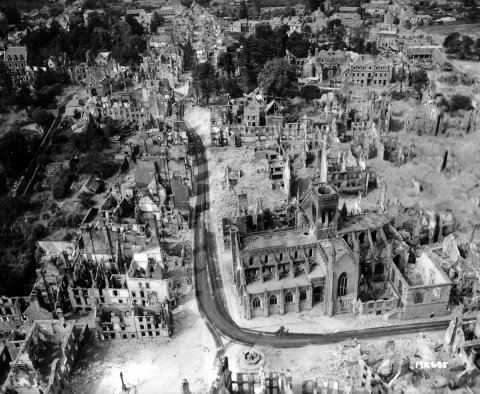
Aerial view of the city of Vire after the bombings of 6 June 1944, Notre Dame Church is the only building left standing in the middle of the ruins. Source: Basse-Normandie Regional Council / National Archives of Canada
In all, nearly 20,000 Normandy civilians perished in the fighting, especially under the bombs, and 300,000 others suffered losses. But the victims and the destruction related to the landing and the Liberation fighting also affected the Loire Valley (Nantes, Tours), the Brittany coast (Brest, Lorient, Saint-Nazaire), the Atlantic coasts - notably Royan - and the North of France (Lille, Amiens, Dunkerque).
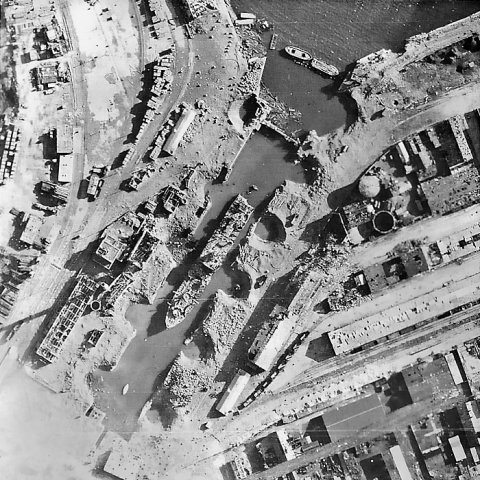
Bombing of Brest by the Royal Air Force - Late August 1944. Source: Royal Air Force
During the Battle of Normandy, the cities of Le Havre (1,770 civilians killed), Caen (1,741), Rouen (883) Saint-Lô (400) and Falaise (350) particularly suffered, but proportionally it was the small town of Evrecy in the Calvados department, with 62 dead for 460 inhabitants, that was hardest hit.
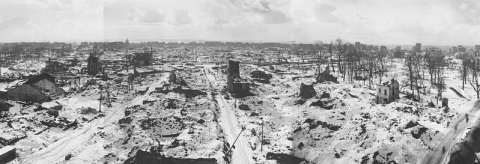
Le Havre, winter of 1944-1945. Source: GNU Free Documentation License
Memorial to the Civilian Victims in Normandy

Former courthouse in Falaise. Source: DR
The Museum is scheduled to open in 2015.


